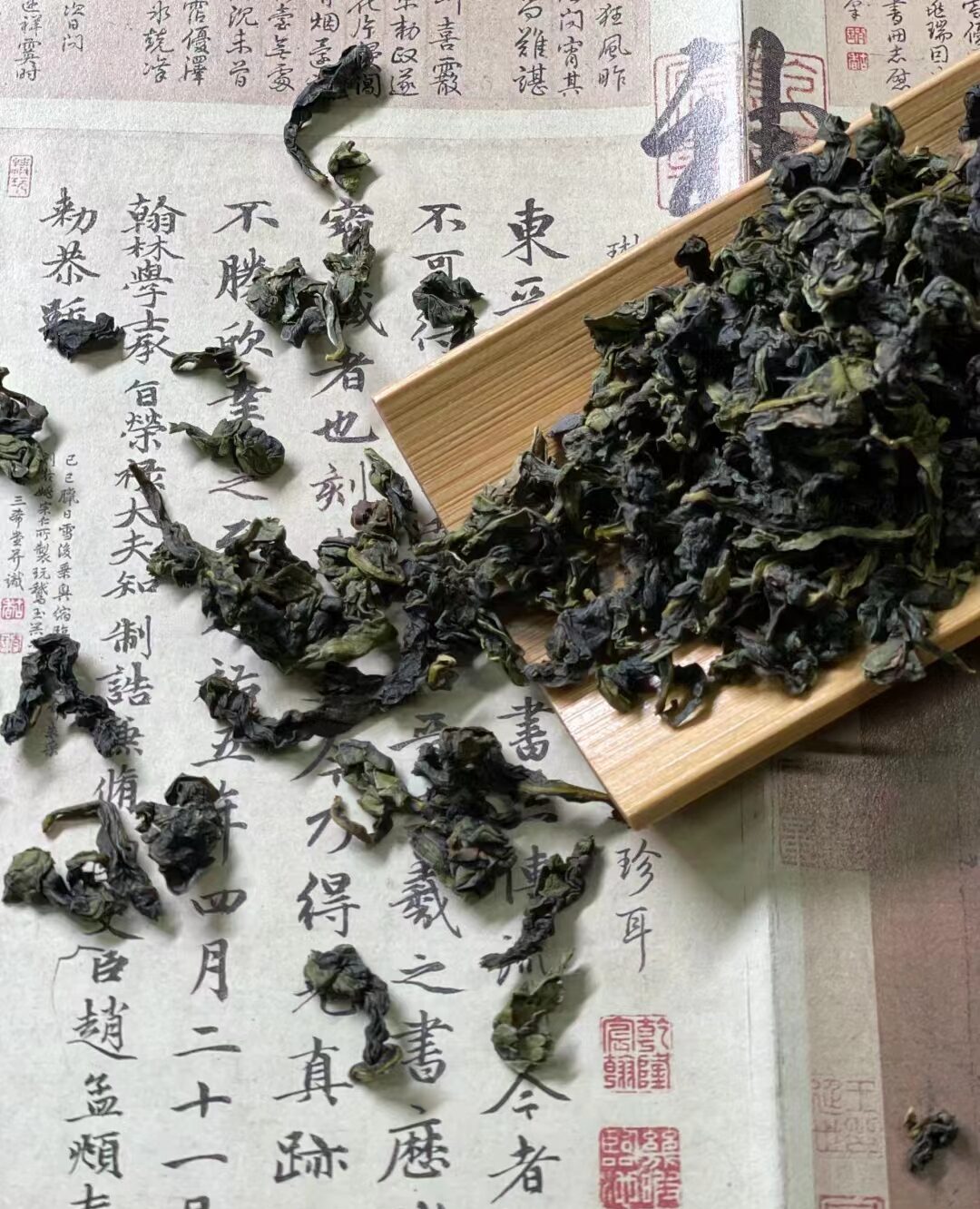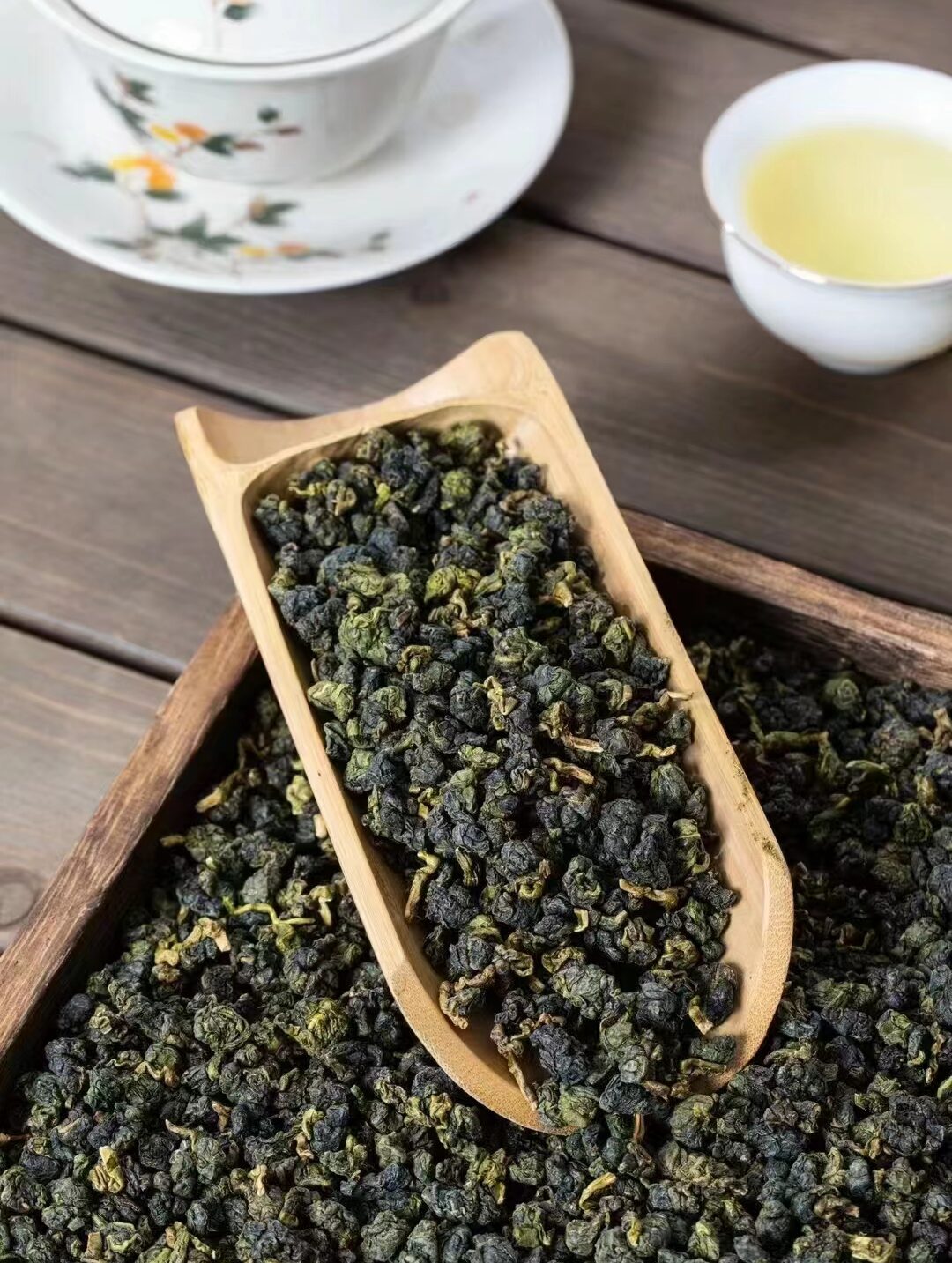Oolong tea has various classifications; there are lightly baked oolong teas and heavily baked oolong teas.
Clear aroma oolong tea, which is not baked and lightly fermented in granulated form, includes varieties such as Taiwan High Mountain Tea and Alishan Oolong Tea. Heavily baked oolong tea, which undergoes roasting and has a higher level of fermentation, includes types like Da Hong Pao and Rock Tea.
Different types of oolong teas require different types of purple clay teapots (Yixing clay teapots) to genuinely stimulate the fragrance of the tea and provide a more delightful flavor.
This article will thoroughly introduce different types of oolong tea and their corresponding necessary Zisha pots, including the type of clay used for the pot, purple clay teapots shapes, and more.

Types of Oolong Tea
Oolong tea primarily has three classification methods. Based on the areas of production, it can be subdivided into Southern Fujian Oolong Tea, Northern Fujian Oolong Tea, Guangdong Oolong Tea, Taiwan Oolong Tea, and other Oolong teas.
Based on the form, it can be divided into strip-type Oolong tea, semi-spherical Oolong tea, bundle-shaped Oolong tea, and solid ball Oolong tea. Based on the degree of fermentation, it can be split into lightly fermented tea and heavily fermented tea.
Southern Fujian Oolong Tea is mainly produced in southern Fujian regions like Anxi, Yongchun, Nan’an, and Tongan. The renowned Anxi Tie Guan Yin represents Southern Fujian Oolong Tea, which also includes famous teas like Golden Osmanthus from Anxi, Mao Crab from Datong, Benshan, Fo Shou from Yongchun, Baiya Qilan from Pinghe, South Narcissus, Meizhan and so forth.
Northern Fujian Oolong Tea originates from northern parts of Fujian, including Jianyang, Wuyi Mountain, Jian’ou, and Shaowu. It is famously represented by Wuyi Yancha (rock tea), mainly Da Hong Pao, hailed as the “king among teas”. Teas such as Tieluohan, Baijiguan, Golden Tortoise, Ignoramus, Thousand-miles Aroma, Wuyi Cinnamon, Wuyi Narcissus, Jian’ou Narcissus, Dwarf-leg Oolong, Chongan Oolong are all part of Northern Fujian Oolong tea.
Guangdong Oolong Tea’s primary products include Fenghuang Dancong, Phoenix Narcissus, Lingtou Dancong, Raoping colored species, Shiguping Oolong, Danye Qilan, Xingning Qilan and so forth. The two most renowned of these are Fenghuang Dancong from Chao’an and Lingtou Dancong from Raoping.
Taiwan Oolong Tea, originally from Fujian, developed its production methods further. Main products include Wenshan Baozhong, Dong Ding Oolong, Eastern Beauty, Alishan Oolong, Golden Daylily, Muzha Iron Goddess, etc. Among them, the most famous are Dong Ding Oolong and Wenshan Baozhong for their light fermentation, and Eastern beauty for heavy fermentation.

Other Oolong teas mainly include Wen Mountain oolong tea from Zhejiang, Zhejiang early fragrant Oolong tea, Sichuan Zhengda high mountain Oolong tea and more.
1. Green Oolong (Light Oolong)
Clay Type: Zhu Ni (the best), Zi Ni, Hong Ni, Xiangpo Ni, Duan Ni
Teapot Shape: Round, Tall (relatively), Thinner walled
2. Dark Oolong (Roasted Oolong)
Clay Type: Zi Ni, Di Cao Qing, Hong Ni, Xiangpo Ni
Teapot Shape: Flat, Medium thick-walled
Teapots suitable for Green Oolong:
Zhu Ni purple clay teapots: Zhu Ni is sourced from ancient mines at the bottom of wells. Its hard and dense texture helps collect the tea fragrance and significantly enhances the scent of the tea infusion. The material and color of Zhu Ni have a warm feeling. Vibrant as vermilion, it gives a sense of time sedimentation.
Brewing Clear Aroma Oolong teas such as Taiwan High Mountain tea and Dong Ding Oolong in Zhu Ni teapot maintains the purity of the tea flavor and maximizes the fresh, multi-layered aroma of this type of oolong tea.
Teapots suitable for Dark Oolong:
Zi Ni purple clay teapots: Zi Ni’s physical structure contains an abundant, sponge-like organization with complex pores, making it well suited for brewing Rock Tea and other more complex teas. Zi Ni purple clay teapots contain a high amount of rice stones, strongly effective at removing fishy flavors, clarifying turbidity, promoting maturity, and awakening aromas.
Consequently, using Zi Ni pots to brew heavily roasted Oolong teas like Da Hong Pao or Rock Tea can relax the originally strong flavor of the tea, rendering it rounder while enhancing the charm.
Jiangpo purple clay teapots: Jiangpo clay has higher amounts of hematite and ilmenite, resulting in less breathability but outstanding capability of preserving the aroma. When brewing heavyweight baked Oolong teas that demand high-temperature crafting and offer intricate flavors and rich tastes, the insulating effect of Jiangpo clay will be more noticeable. This allows the tea soup to maintain a relatively high temperature which fully activates all the flavors within the leaves.
What type of purple clay teapot is used for Oolong tea?
Oolong tea generally takes the form of tightly curled granules or twisted strips, and it will unfurl after brewing. Therefore, when selecting a purple clay teapot, one needs to choose a pot shape with a larger belly, such as the most commonly seen XiShi teapot, frequently used for oolong tea. It provides ample space for the tea leaves to unfold and release their inherent substances.
Conclusion
Oolong tea is an exceedingly popular type of tea that is beneficial for overall health. Choosing a suitable purple clay teapot according to the specific oolong tea variety can elevate the tea tasting experience to its finest quality.
Different types of Oolong teas possess diverse aromatic nuances and taste profiles. Each originates from unique regions and undergoes different fermentation and roasting processes, resulting in multiple levels of complexity in flavor. Pairing these distinct characteristics with the right Zisha teapot—each having its own optimal capacity to retain heat, scent, and enhance the taste—draws out the richest tastes from the tea.
The tradition and artistry behind Zisha teapots also contribute to this sensory delight. They are not only functional vessels but also representative of Chinese tea culture and aesthetics. Selecting the right combination ensures the experiential fusion of unparalleled savoring pleasure and cultural appreciation.